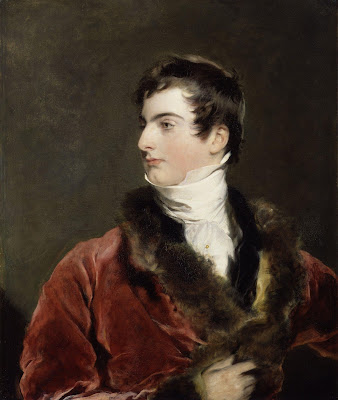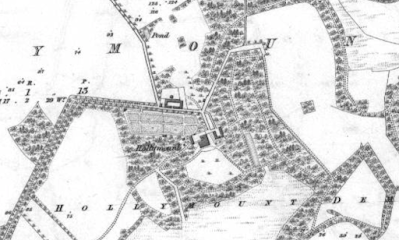SAMUEL MAXWELL ALEXANDER, OF ROE PARK, OWNED 5,229 ACRES OF LAND IN COUNTY LONDONDERRY
The elder branch of this family was ennobled, in 1663, by the title of EARL OF STIRLING, in the person of WILLIAM ALEXANDER, of Menstrie, Clackmannanshire. The name of ALEXANDER was assumed from the Christian name of its founder, Alexander Macdonald, of Menstrie. This branch, on removing into Ulster, adopted into the family shield the Canton charged with the Harp of Ireland, and settled at Limavady, County Londonderry.
JOHN ALEXANDER, of Eridy, County Donegal, 1610, had issue,
ANDREW, his heir;
John;
Archibald;
William;
Robert.
THE REV DR ANDREW ALEXANDER, of Eridy, a Presbyterian minister, who married Dorothea, daughter of the Rev Dr James Caulfeild, and dying around 1641, left a son,
ANDREW ALEXANDER (1625-), of Ballyclose, Limavady, County Londonderry (attainted by JAMES II, 1689), who wedded firstly, Jessie, daughter of Sir Thomas Phillips, called Governor Phillips, and had a son and heir, JACOB.
He espoused secondly, a daughter of the Laird of Hillhouse, and had a son, JOHN, ancestor of the EARLS OF CALEDON.
The elder son,
JACOB ALEXANDER (1668-1710), of Limavady, married, in 1692, Margaret (or Jane), daughter and heiress of John Oliver, of The Lodge, Limavady, chief magistrate appointed to administer the oath of allegiance on the accession of WILLIAM & MARY, and had issue,
JAMES ALEXANDER (1694-1786), of Limavady, merchant, who wedded Elizabeth Ross, of Limavady, and had issue,
LESLEY ALEXANDER (1725-1820), of Limavady, who espoused Anna Simpson, of Armagh, and had issue,
JOHN, his heir;The eldest son,
James;
Lesley, of Foyle Park;
Alexander;
Thomas;
Louisa; Jane; Elizabeth.
JOHN ALEXANDER, wedded, Margaret, daughter of Samuel Maxwell, and had issue,
Lesley, died unmarried;The third son,
Alexander, died unmarried;
SAMUEL MAXWELL, of whom hereafter;
John, of Limavady;
Anna; Jane.
SAMUEL MAXWELL ALEXANDER JP DL (1834-86), of Roe Park, High Sheriff of County Londonderry, 1858, espoused, in 1884, Henrietta Constance, daughter of Sir Frederick William Heygate, 2nd Baronet, though the marriage was without issue.
In 1697, Sir Thomas Phillips' holdings, which included ROE PARK, were sold by his grandson to the RT HON WILLIAM CONOLLY, who came to live in Phillips' new house in Limavady, County Londonderry.
When Speaker Conolly sold his estate to MARCUS McCAUSLAND in 1743, the McCausland family greatly improved the house (and changed the name to Daisy Hill), by creating the five-bay structure which still forms the current frontage.
Roe Park House is a long, irregular, two-storey Georgian house of different periods, of which its nucleus seems to be a five-bay dwelling, built at the beginning of the 18th century by Speaker Conolly
Roe Park's principal features are a three-sided bow with a curved, pedimented and pillared door-case.
The drawing-room and dining-room have fine Victorian plasterwork.
There is a large and imposing pedimented stableyard.
In 1782, Marcus McCausland's son, Dominick, inherited the estate.
He added a fine dining-room and built substantial office buildings, which included a coach-house designed by Richard Castle in 1784.
This building still stands today and houses the Roe Park hotel's restaurant and golf shop.
 |
| Roe Park House (Image: UAHS) |
Dominick McCausland also extended the estate by purchasing adjoining town lands on both sides of the river.
He proceeded to plant thousands of trees on his estate.
He also built a ten-foot wall to surround part of the estate - parts of which are still visible today - and a foot bridge (known locally as The Spring Bridge) so that he could service the well which supplied fresh water to the house known as Columba's Spring.
During this time, it's likely that the walled garden (now the golf driving-range) and gazebo were built.
This gazebo was slightly bigger than it is today and was the home of the estate's head gardener until the 1950s.
In 1817, Daisy Hill was sold to John Cromie, of Portstewart, who renamed the house Roe Park.
Mr Cromie, in turn, sold the estate to SIR FRANCIS WORKMAN-MACNAGHTEN Bt for £11,500.
 |
| Roe Park House (Ebay) |
Sir Edmund, the 2nd Baronet, sold the estate in 1847 to Archibald Rennie, of Inverness, for £12,000 (about £1 million in 2019).
Mr Rennie mortgaged the property to Harvey Nicholson, of Londonderry, who came into possession of the estate during 1850.
In 1872, the estate was bought by Samuel Maxwell Alexander for £12,150 (about £1.4 million in 2019).
Mr Alexander, a distant cousin of the Earls of Caledon, married Henrietta Constance Heygate, daughter of SIR FREDERICK WILLIAM HEYGATE Bt, in 1884.
As this gentleman brought extensive lands from his own estate, this extended Roe Park to 5,229 acres.
Mr Alexander died in 1886, but as he had no immediate family, the estate was left to his two nieces.
The part that included Roe Park was bequeathed to Elizabeth Jane Stanton who, in 1887, married John Edward Ritter; thus Roe Park came into ownership of the Ritter family.
Mr Ritter died in 1901 and the estate passed to his widow, who managed it until she died in 1926.
The estate then passed to her son, Major John Alexander Ritter, Royal Artillery.
Major Ritter continued to manage affairs until his death in 1931, followed by his widow, Mrs Ritter, until her death in 1951.
When Mrs Ritter died, the estate was sold again.
Alas, it was at this time that the estate was stripped of many of the fine trees planted by Dominick McCausland in the late 1700s.
Roe Park House was converted into a residential care home, which closed in 1991, when the house and lands were purchased and developed into the current Roe Park Hotel.
First published in January, 2014.



































